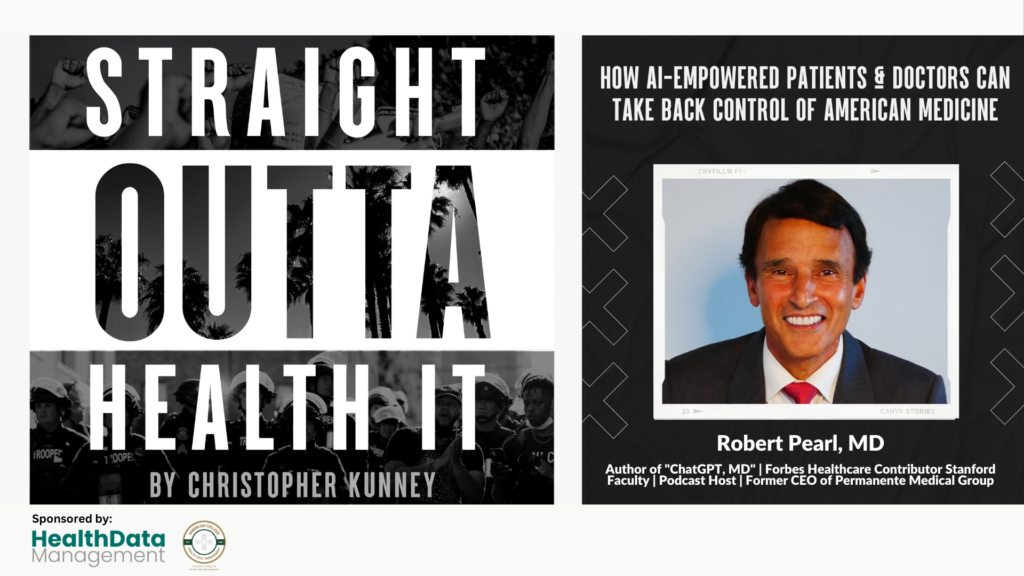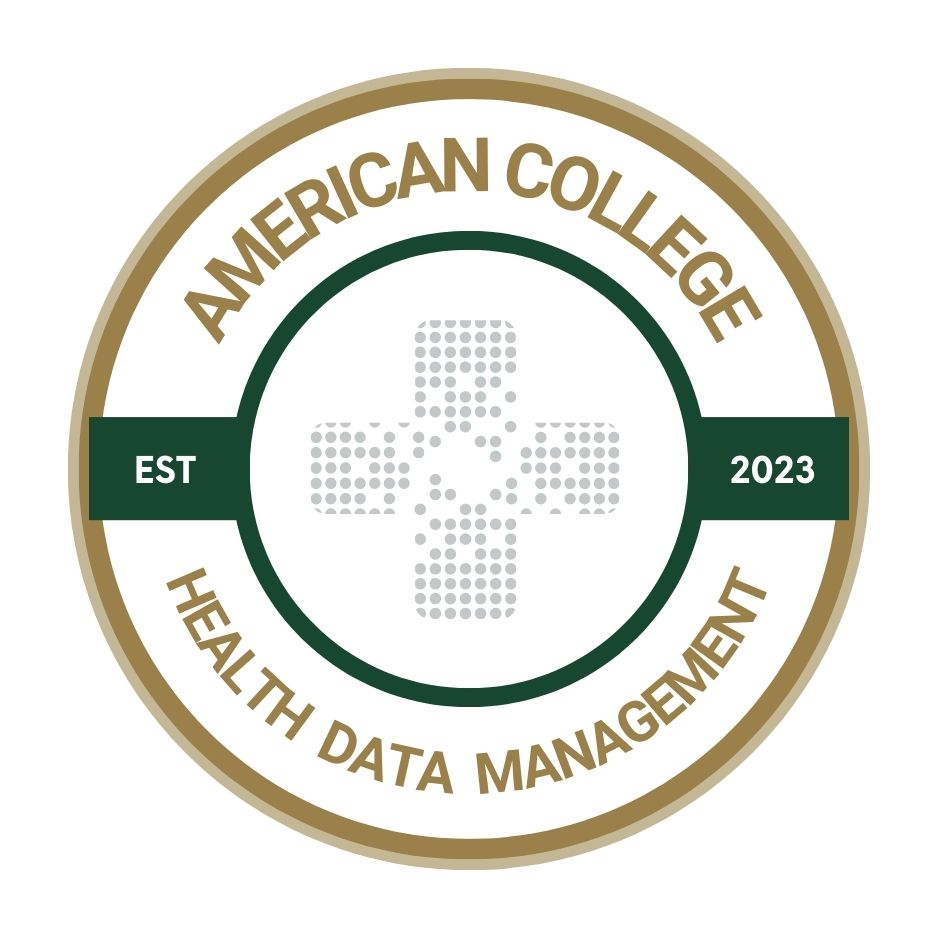PODCASTrecap: Straight OUTTA Health IT, featuring Dr. Robert Pearl
Host Christopher Kunney sits down with Dr. Robert Pearl to explore the impact of AI on chronic disease management, medical errors and more.

Generative AI, particularly tools like ChatGPT, has advanced at an exponential rate, doubling in capabilities every year. This rapid improvement means AI could be 30 times more powerful in just five years. This growth trajectory suggests that AI will soon be able to perform tasks and solve problems in healthcare that are currently unimaginable.
In a recent episode of "Straight OUTTA Health IT," host Christopher Kunney sat down with Robert Pearl, MD. Their conversation provided deep insights into how generative AI can empower both patients and healthcare providers, promising a future where technology not only enhances but redefines the delivery of care.
Pearl, known for his leadership at Kaiser Permanente and his role as an educator at Stanford, has been an advocate for healthcare reform. His latest book, "ChatGPT MD: How AI Empowered Patients and Doctors Can Take Back Control of American Medicine," explores the revolutionary potential of generative AI.
As Pearl explains, the rapid advancement of AI technologies offers a solution to many of the longstanding challenges in American healthcare, from inefficiencies and high costs to medical errors and chronic disease management.
One of the most compelling advantages of generative AI is its potential to provide immediate, reliable medical advice. Imagine parents in the middle of the night worried about their child’s high fever. Instead of rushing to the emergency department or scouring the Internet for answers, they could consult an AI tool that offers expert guidance. While not perfect, this AI-driven advice is likely to be far superior to the information typically available to anxious parents online.
Enhancing chronic disease management
Chronic diseases affect 60 percent of Americans, but even so, healthcare systems are ill-equipped to manage these conditions effectively.
Pearl points out that the traditional approach — periodic office visits by patients every few months — fails to provide the continuous monitoring and support that chronic disease patients need. Generative AI can bridge this gap by analyzing data from wearable devices and providing daily health management advice. This continuous feedback loop could prevent complications and improve overall health outcomes.
Moreover, the integration of genomic information into patient care, which is currently underutilized because of its complexity, could be seamlessly managed by AI. Generative AI can process vast amounts of genetic data, helping clinicians to personalize treatments in ways that were previously impossible.
Addressing medical errors
Medical errors are a significant issue in healthcare, contributing to countless deaths and disabilities each year. Pearl believes that AI can dramatically reduce these errors by providing clinicians with better diagnostic tools and real-time information.
AI can cross-reference symptoms, medical histories and current best practices to offer diagnostic suggestions that clinicians might not consider. This augmentation of human expertise with AI’s analytical power can enhance the accuracy of diagnoses and treatment plans.
Overcoming AI adoption barriers
Despite the clear benefits, the adoption of AI in healthcare faces several hurdles. One major challenge is the resistance from within the medical community. Many clinicians are wary of AI, fearing that it could replace their roles or that it is not yet reliable enough to trust fully.
Pearl acknowledges these concerns, but he argues that AI should be seen as a tool to augment, not replace, human clinicians. He envisions a collaborative future where AI handles routine tasks, enabling physicians to focus on more complex and human-centric aspects of care.
Another barrier is the current healthcare system’s emphasis on fee-for-service models, which incentivize volume over value. Pearl advocates for a shift to capitated reimbursement models that prioritize health outcomes over the number of services provided. In such a system, AI’s ability to improve efficiency and patient outcomes would be fully leveraged, aligning economic incentives with the goal of better healthcare.
The road ahead
Pearl’s vision for the future of healthcare is one where generative AI plays a central role in enhancing patient care and reducing costs. He sees a world where technology enables early diagnosis and prevention, reducing the burden of chronic diseases and medical errors.
This vision is not just about technological advancement but also about systemic change — adopting new reimbursement models, embracing interoperability, and fostering a culture that values continuous improvement and innovation.
The human element
Ultimately, the successful integration of AI in healthcare hinges on the human element. As Pearl and Christopher Kunney discuss, the technology itself is only part of the solution.
Educating patients and clinicians about the benefits of AI, addressing their fears and concerns, and ensuring that AI tools are used ethically and responsibly are crucial steps toward a future where AI and humans work together to improve healthcare.
Pearl’s optimistic outlook is a call to action for healthcare leaders, policymakers and clinicians. The tools to revolutionize healthcare are within our grasp, but it will require vision, leadership and a willingness to embrace change. As generative AI continues to evolve, the possibilities for improving patient care and reclaiming control of American medicine are boundless.
Listen to the full interview here.
